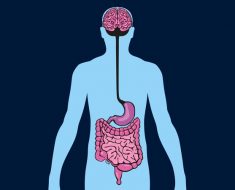A digitally supported psychological reasoning intervention known as SlowMo helps patients with persistent paranoia “slow down” their thinking to curb paranoid thoughts, new research suggests.
“We have demonstrated, for the first time in a large randomized controlled trial, that helping people to slow down their thinking reduces paranoia in everyday life and improves quality of life and well-being,” Philippa Garety, PhD, lead researcher at SlowMo, told Medscape Medical News.
“SlowMo is at least as effective as longer, more complex psychological treatments for paranoia, which are generally more challenging to deliver and frequently not available in clinical services,” said Garety, from the Institute of Psychiatry, Psychology & Neuroscience, King’s College London, UK.
The study was published online April 7 in JAMA Psychiatry.
Taking the Fuel Out of Paranoia
Paranoia is fueled by “fast thinking,” which is driven by instinct and gut feelings. Slowing down can help, Garety explained.
Developed by a team from the UK, SlowMo uses an “interventionist-causal” approach to increase the effectiveness of cognitive behavioral therapy for psychosis (CBTp) by targeting reasoning processes considered to play a causal role in paranoia.
SlowMo combines digitally supported face-to-face therapy via a smartphone app and web platform to help people notice their fast paranoid thoughts and teaches them to slow down using tips and personalized safer thoughts, which are displayed on the app as on-screen bubbles with messages.
Participants in the study were 362 adults (mean age, 42.6 years; 70% male, 69% White) with schizophrenia-spectrum psychosis and distressing persistent paranoia lasting at least 3 months. They were recruited from community health services in the UK.
All received usual care and half received SlowMo therapy, consisting of eight digitally supported face-to-face sessions and the mobile app.
SlowMo therapy was “engaging and over 80% of participants completed all therapy sessions,” said Garety.
Adding SlowMo to usual care was not associated with greater reductions in the Green et al Paranoid Thoughts Scale (GPTS) total score at 24 weeks, the primary outcome (Cohen’s d, 0.20; 95% CI, −0.02 – 0.40; P = .06).
However, there were significant effects of SlowMo on secondary paranoia outcomes at 12 weeks, including GPTS total score (d, 0.30; 95% CI, 0.09 – 0.51; P = .005), GPTS Part A (reference) score (d, 0.22; 95% CI, 0.06 – 0.39; P = .009), and GPTS Part B (persecutory) score (d, 0.32; 95% CI, 0.08 – 0.56; P = .009), and at 24 weeks, including GPTS Part B scores (d, 0.25; 95% CI, 0.01 – 0.49; P = .04).
The addition of SlowMo to usual care also led to improvements in an observer-rated measure of persecutory delusions at 12 weeks (d, 0.47; 95% CI, 0.17 – 0.78; P = .002) and 24 weeks (d, 0.50; 95% CI, 0.20 – 0.80; P = .001) and belief flexibility (possibility of being mistaken) at 12 weeks (d, 0.29; 95% CI, 0.09 – 0.49; P = .004) and 24 weeks (d, 0.28; 95% CI, 0.08 – 0.49; P = .005).
‘Freedom and Peace‘
“Although no effect was demonstrated on the primary paranoia outcome at 24 weeks, the pattern of results on secondary outcomes indicates SlowMo had a positive effect on paranoia, mostly sustained at follow-up, that matched or exceeded effects observed for standard CBTp albeit delivered in fewer sessions,” the researchers note in their article.
“Improvements in well-being, quality of life, and self-concept also occurred. The results indicate that the treatment was effective, in part, through helping people to slow down their thinking and to worry less,” they add.
In a press release from King’s College London, a trial participant who lives with psychosis said, “The focus on fast and slow thinking really helped. The eye-catching, helpful bubbles taught me that I can end the cycle of worry, and I do not need to think speedily and start panicking. I have got that now for life. Now all my worries are lessened by SlowMo and I have freedom and peace that I did not have before.”
SlowMo is not being used outside of clinical trials yet. “However, the results of the trial mean that work on optimizing effects and on implementing SlowMo in clinical services is warranted,” Garety told Medscape Medical News.
The researchers have funding to develop SlowMo so it can be tested for routine use in the National Health Service (NHS).
Reached for comment, Thomas Sedlak, MD, PhD, assistant professor of psychiatry and behavioral sciences, Johns Hopkins University School of Medicine, Baltimore, Maryland, told Medscape Medical News there are a number of digital app therapy interventions in development for mood disorders.
“The main struggle we face is often getting the patient to do any of them. I have a general enthusiasm for any sensible nonmedication approach, eg, not just relying on medication alone. I think it will be some time before we get a sense if these add much to having a good therapist or not,” Sedlak said.
Funding for this research was provided through a partnership of the National Institute for Health Research (NIHR) and the Medical Research Council, and in part, by the NIHR Biomedical Research Centre at South London and Maudsley NHS Foundation Trust and King’s College London, the NIHR Oxford Health Biomedical Research Centre, and the NIHR Kent, Surrey and Sussex NIHR Applied Research Collaboration. Garety and Sedlak have reported no relevant financial relationships.
JAMA Psychiatry. Published online April 7, 2021. Full text
For more Medscape Psychiatry news, join us on Facebook and Twitter.
Source: Read Full Article





